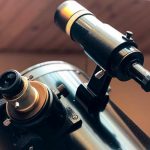Coarse Adjustment Knob
If you’re relatively new to microscopes, you’ve probably heard the term coarse adjustment knob, sometimes referred to as the stage adjustment knob, and you might be wondering what exactly it is and what’s its function.
When you view an object, you position it on the stage of your microscope. The coarse adjustment knob quickly lowers and raises the stage or the lens, depending on the microscope’s design.
We are talking about raising and lowering the stage or lens within the centimeter range when we use the word quickly.
This article will discuss the coarse adjustment function in more detail, for example, where you will find the knob on your microscope and when you should use it, plus we’ll also talk about the fine adjustment knob.
Fine Adjustment Knob
We need to refer to the fine adjustment knob in the article as well as the coarse adjustment knob—the two work in conjunction with one another. The fine adjustment knob makes it possible for whatever you’re viewing to be clear and in focus and view at greater magnification levels.

Coarse And Fine Adjustment Knobs
To find the coarse adjustment knob, you need to look on the microscope’s arm from the mid-point down to the bottom of the arm. In most modern microscopes, the coarse and fine adjustment knobs are in a double position, with the fine knob sitting on top of the coarse knob. The coarse adjustment knob being closest to the arm of the microscope.
This solution makes it so much easier for the user to operate the two knobs. Being in such close proximity to each other, the user doesn’t need to search for the fine adjustment knob when focusing on the subject through the eyepieces.
In 1962 Leonard A. Wilkinson patented his coaxial design of the two knobs. Before this design, the two knobs were in various positions on the microscope. Now users of microscopes with the coaxial design can keep their eyes on the eyepiece when they need to use fine focus. Some microscopes still use the two-knob system, but you might be better off choosing the coaxial version of the two knobs if you think of purchasing a microscope.
Using The Coarse Adjustment Knob And The Fine Adjustment Knob
When using the coarse adjustment knob (the knob closest to the arm), the stage or the lens moves more quickly than when you use the smaller of the two knobs, the fine adjustment knob. The coarse or more oversized knob will move the stage by centimeters, but the fine or smaller knob moves by only millimeters.
Finding a specimen by looking through the eyepiece can be a tricky thing, especially for novice users. One point you should think about when viewing is you are behind or ahead of the viewing object.
Turning the knob in a slow, controlled way, you will see something instantly come into and out of view. When this occurs, you stop turning the coarse knob. Now you have passed the object, but you do not try to turn the coarse knob backward to try and find the item again.
Instead, you switch to the fine adjustment knob.

Because you passed the object with the coarse adjustment knob, you now work backward with the fine adjustment knob. As we mentioned, this knob moves in millimeters, so you must turn the knob ultra-slowly.
By turning the knob towards yourself, you are now moving back to the object. You will pass the item again if you move the knob too quickly. If the object is there and instantly gone, you have passed it and must slowly turn the knob in the opposite direction to come to the item again.
If you turn the knob in slow enough increments, your specimen will now be in view, and you can use the same knob to bring it more in focus. If the sample will not come into focus and you once again lose it, unfortunately, you will have to start again.
Once the specimen is in focus correctly, you can now turn the turret of the microscope to the magnification level that is the highest.
You will not be 100% certain where you are at this stage; you might be behind or ahead of your specimen. To bring it into complete focus, you will have to adjust the fine focus knob in one direction. If you choose the wrong direction, your sample will move further out of focus. If this happens, turn the fine adjustment knob the opposite way.
A rule of thumb to go by is that the specimen should be in focus by the time you turn the knob, only one-quarter revolution.
If you end up turning the knob one revolution and it is still not there, it means starting over again. To give you an idea of the distance the stage will move by turning the fine adjustment knob one complete revolution may only be 0.2mm. That seems a minute adjustment, and it is, but this is necessary to focus correctly.
Focus Tension On The Coarse And Fine Adjustment Knobs
You might begin to notice when you take your hand away from the adjustment knobs, the specimen goes out of focus, or the stage lowers, and the focus knobs turn by themselves.
Focus tension is a simple problem and can be easily fixed, even though it can be quite annoying.
Most microscopes have a built-in tension adjuster; it might be a simple knob you tighten to strengthen the tension. Some microscopes require a tool to adjust the tension. This system allows users to set the tension they are most comfortable using.
In Conclusion
Every user of a microscope must understand the difference between the coarse and fine adjustment knobs because it’s literally impossible to use a microscope correctly without these two knobs. But it’s not just knowing where the knobs are positioned and their purpose; users need to practice using the knobs to get the hang of them thoroughly.
The coarse adjustment knob is responsible for finding the image on the stage and getting the image quickly into focus. The fine adjustment knob then keeps the specimen in focus while the user views it under different magnification levels.



















